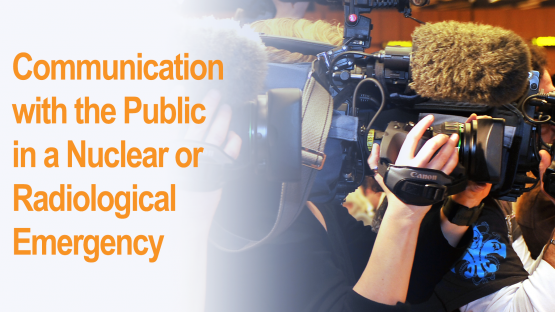Well-planned communication from well-trained communicators will be key to help the public understand the impact of an emergency situation and how to comply with protective actions. The IAEA has produced and launched a new e-learning course, based on the IAEA publication Communication with the Public in a Nuclear or Radiological Emergency, to provide effective, accessible and flexible training no matter where and when the trainee wants to learn. Using this publication as a basis, the e-learning course was developed to provide the user with an interactive learning framework.
This e-learning course is designed to give public information officers, as well as other emergency preparedness and response professionals and interested parties, the opportunity to practice their emergency communication skills and learn from the lessons of past incidents and emergencies. The course was developed by the IAEA based on the inputs from communication experts of different Member States and is universally available and free of charge for each user. A modular structure ensures that everyone can go through the topics at his or her own pace.
What content does the course cover?
The course gives information on how to prepare and train for emergency communication before a nuclear or radiological emergency occurs. It also provides communication tools to assist public information officers in case of a nuclear or radiological incident or emergency and gives instructions on how to use clear language when sharing basic information on radiological and nuclear emergencies with the general public.
To illustrate the information and to make it more accessible, the course includes examples from past emergencies in IAEA Member States with related multimedia. Various exercises and questionnaires make it possible to test and practice the acquired knowledge and users are encouraged to make repeated visits to refresh their knowledge.
Modules included:
- Examples of public communication in nuclear or radiological emergencies
- Types of radiation emergencies
- Public perception of risk
- Public communication programme
- Public communication within a command and control system
- Coordination of information
- Special considerations for communicating in an emergency
- Sources of information
- Audiences and communication channels
- Communicating information about radiation
- Presenting messages
- Media relationships
- Spokesperson
- Challenges in public communication
- Emergency exercise scenario
- Good practice for public information officers
How to participate:
More information and the link to register can be found at http://elearning.iaea.org/m2/.
Registration requires access to Nucleus, the common access point to the IAEA's scientific, technical and regulatory information resources. More information on registration with Nucleus can be found at https://nucleus.iaea.org/Pages/Help/Registration.aspx.




